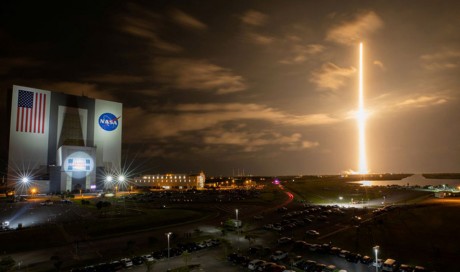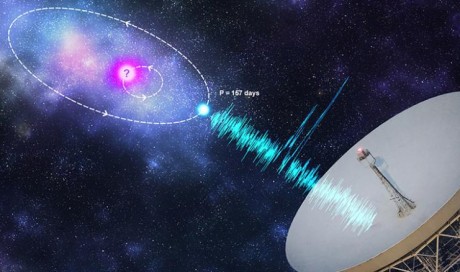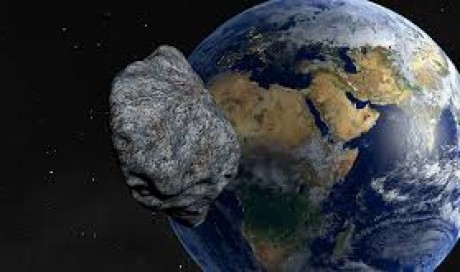GRAVITATIONAL WAVES DETECTED
In a discovery that rocked the world of astronomy and physics, scientists announced in October that they had detected ripples in space-time known as gravitational waves. Einstein predicted the existence of such waves — in this case produced by the collision of a pair of neutron stars some 130 million years ago — in his general theory of relativity. But this was further proof that Einstein was right.

This artist's impression shows two tiny but very dense neutron stars at the point at which they merge and explode as a kilonova. Mark Garli / University Of Warwick
The ability to detect gravitational waves could help astronomers piece together clues about everything from the evolution of the universe to the nature of dark matter, an elusive substance that is thought to make up 70 percent of the cosmos.
FAREWELL, CASSINI!
After spending 13 years orbiting Saturn, NASA’s Cassini spacecraft ended its prolific mission by plunging into the atmosphere of the ringed planet on September 15. The school-bus-sized space probe launched into space in October 1997 and arrived at Saturn in June 2004. During its lifespan, Cassini studied Saturn and its rings and moons in unprecedented detail, snapping more than 453,000 pictures in the process. [Watch: The Story Behind Cassini’s Final Moments]
MODIFIED HUMAN EMBRYOS
In July, researchers at the Oregon Health & Science University in Portland announced that they had created viable genetically modified human embryos. The unprecedented feat was made possible with the help of a revolutionary gene-editing tool known as CRISPR-Cas9.
None of the modified embryos was allowed to develop into a baby. But the study ignited a fierce ethical debate about whether CRISPR should be used to correct disease-causing mutations. [Read more: 11 amazing feats the gene-editing tool CRISPR just made possible]
...[ Continue to next page ]
Share This Post














